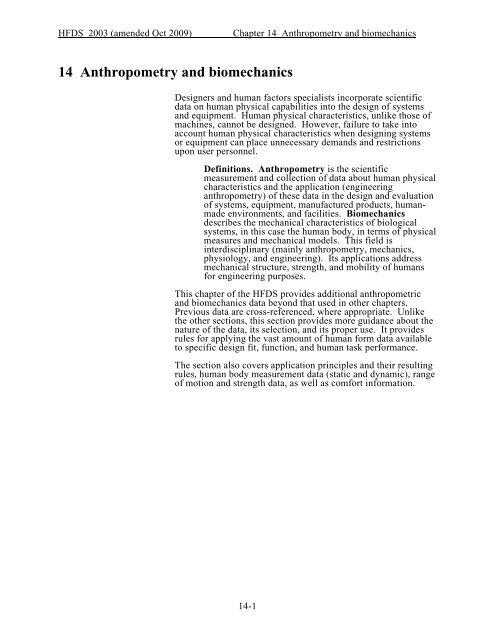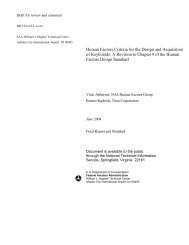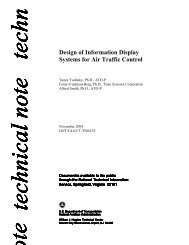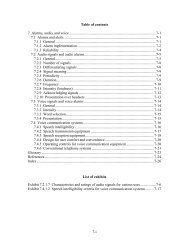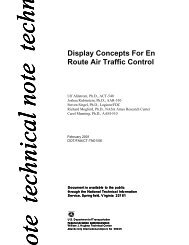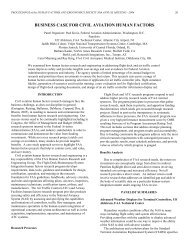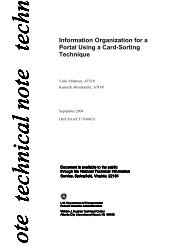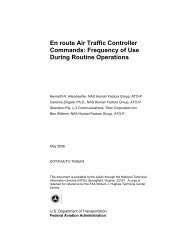Chapter 14. Anthropometry and Biomechanics - FAA
Chapter 14. Anthropometry and Biomechanics - FAA
Chapter 14. Anthropometry and Biomechanics - FAA
Create successful ePaper yourself
Turn your PDF publications into a flip-book with our unique Google optimized e-Paper software.
HFDS 2003 (amended Oct 2009)<strong>Chapter</strong> 14 <strong>Anthropometry</strong> <strong>and</strong> biomechanics14 <strong>Anthropometry</strong> <strong>and</strong> biomechanicsDesigners <strong>and</strong> human factors specialists incorporate scientificdata on human physical capabilities into the design of systems<strong>and</strong> equipment. Human physical characteristics, unlike those ofmachines, cannot be designed. However, failure to take intoaccount human physical characteristics when designing systemsor equipment can place unnecessary dem<strong>and</strong>s <strong>and</strong> restrictionsupon user personnel.Definitions. <strong>Anthropometry</strong> is the scientificmeasurement <strong>and</strong> collection of data about human physicalcharacteristics <strong>and</strong> the application (engineeringanthropometry) of these data in the design <strong>and</strong> evaluationof systems, equipment, manufactured products, humanmadeenvironments, <strong>and</strong> facilities. <strong>Biomechanics</strong>describes the mechanical characteristics of biologicalsystems, in this case the human body, in terms of physicalmeasures <strong>and</strong> mechanical models. This field isinterdisciplinary (mainly anthropometry, mechanics,physiology, <strong>and</strong> engineering). Its applications addressmechanical structure, strength, <strong>and</strong> mobility of humansfor engineering purposes.This chapter of the HFDS provides additional anthropometric<strong>and</strong> biomechanics data beyond that used in other chapters.Previous data are cross-referenced, where appropriate. Unlikethe other sections, this section provides more guidance about thenature of the data, its selection, <strong>and</strong> its proper use. It providesrules for applying the vast amount of human form data availableto specific design fit, function, <strong>and</strong> human task performance.The section also covers application principles <strong>and</strong> their resultingrules, human body measurement data (static <strong>and</strong> dynamic), rangeof motion <strong>and</strong> strength data, as well as comfort information.14-1


